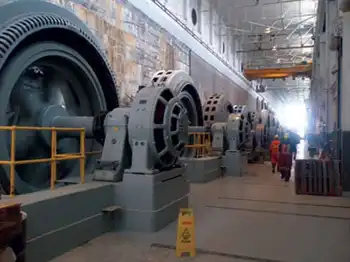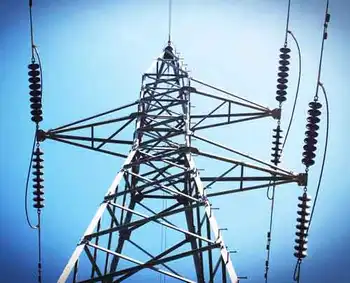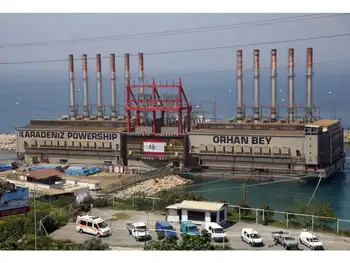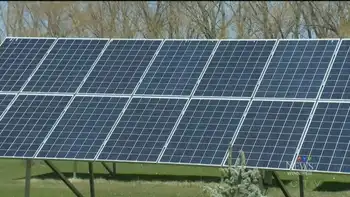Canada and Manitoba invest in new turbines

Arc Flash Training CSA Z462 - Electrical Safety Essentials
Our customized live online or in‑person group training can be delivered to your staff at your location.

- Live Online
- 6 hours Instructor-led
- Group Training Available
Manitoba Clean Electricity Investment will upgrade hydroelectric turbines, expand a 230 kV transmission network, and deliver reliable, affordable low-carbon power, reducing greenhouse gas emissions and strengthening grid reliability across Portage la Prairie and Winnipeg River.
Key Points
Joint federal-provincial funding to upgrade hydro turbines and build a 230 kV grid, boosting reliable, low-carbon power.
✅ $314M for new turbines at Pointe du Bois (+52 MW capacity)
✅ $161.6M for 230 kV transmission in Portage la Prairie
✅ Cuts Brandon Generating Station emissions by ~37%
The governments of Canada and Manitoba have announced a joint investment of $475.6 million to strengthen Manitoba’s clean electricity grid that can support neighboring provinces with clean power and ensure continued supply of affordable and reliable low-carbon energy.
This federal-provincial investment provides $314 million for eight new hydroelectric turbines at the 75 MW Pointe du Bois Generating Station on the Winnipeg River, as well as $161.6 million to build a new 230 kV transmission network in the Portage la Prairie area, bolstering power sales to SaskPower and regional reliability.
The $314 million joint investment in the Pointe du Bois Renewable Energy Project includes $114.1 million from the Government of Canada and nearly $200 million from the Government of Manitoba. The joint investment will enable Manitoba Hydro to replace eight generating units that are at the end of their lifecycle, amid looming new generation needs for the province. The new, more efficient units will increase the capacity of the Pointe du Bois generating station by 52 MW.
The $161.6 million joint investment in the Portage Area Capacity Enhancement project includes $70.9 million from the Government of Canada and $90.6 million from the Government of Manitoba. The joint investment will support the construction of a new transmission line to enhance reliability for customers across southwest Manitoba and help Manitoba Hydro meet increasing demand, with projections that demand could double over the next two decades. By decreasing Manitoba’s reliance on its last grid-connected fossil-fuel generating station, this investment will reduce greenhouse gas emissions at the Brandon Generating Station by about 37%.
The federal government’s total contribution of $184.9 million is provided through the Green Infrastructure Stream of the Investing in Canada Plan, alongside efforts to improve interprovincial grid integration such as NB Power agreements with Hydro-Quebec that strengthen regional reliability. This federal funding is conditional on meeting Indigenous consultation requirements, as well as environmental assessment obligations. Including today’s announcement, the Green Infrastructure Stream has supported 38 infrastructure projects in Manitoba, for a total federal contribution of more than $766.8 million and a total provincial contribution of over $658.4 million.
“A key part of our economic plan is making Canada a clean electricity superpower. Today’s announcement in Manitoba will deliver clean, reliable, and affordable electricity to people and businesses across the province—and we will continue working to expand our clean electricity grid and create great careers for people from coast to coast to coast,” said Deputy Prime Minister and Finance Minister Chrystia Freeland.
The federal government will continue to invest in making Canada a clean electricity superpower, supporting provincial initiatives like Hydro-Quebec's fossil-free strategy that complement these investments to ensure Canadians from coast to coast to coast have the affordable and reliable clean electricity they need today and for generations to come.
“Manitoba Hydro is extremely pleased to be receiving this federal funding through the Green Infrastructure Stream of the Investing in Canada Infrastructure Program. The investments we are making in both these critical infrastructure projects will help provide Manitobans with energy for life and power our province’s economic growth with clean, reliable, renewable hydroelectricity. These projects build on our legacy of investments in renewable energy over the past 100 years, as we work towards a lower carbon future for all Manitobans,” said Jay Grewal, president and chief executive officer of Manitoba Hydro.
About 97% of Manitoba’s electricity is generated from clean hydro, with most of the remaining 3% coming from wind generation. Manitoba’s abundant clean electricity has resulted in Manitobans paying 9.455 ¢/kWh — the second-lowest electricity rate in Canada, though limits on serving new energy-intensive customers have been flagged recently.











